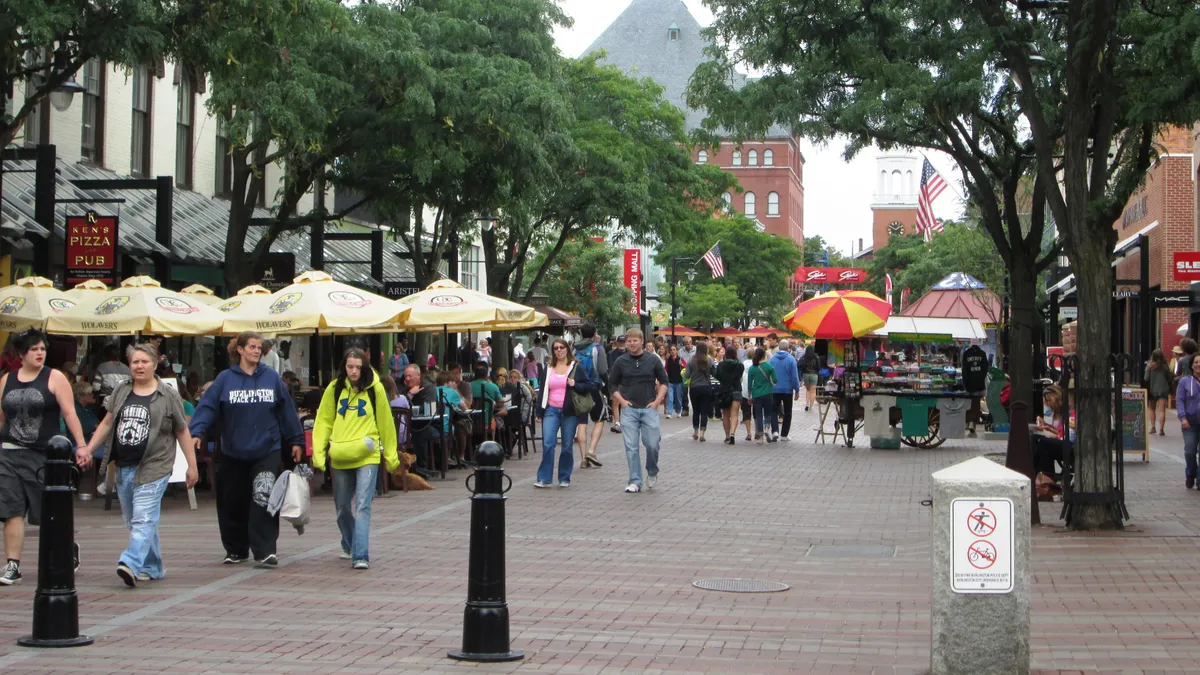Dive Brief:
-
Vermont leads U.S. states in sustainability, according to an analysis by WalletHub that weighed factors such as the number of LEED buildings per capita, water and air quality, and photovoltaic capacity per household. Massachusetts, Oregon, Washington and Connecticut rounded out the top five.
-
At the bottom of WalletHub’s list were Wyoming, Montana, West Virginia, North Dakota and Oklahoma.
- Wyoming fared well in air quality, however, followed by North Dakota and Vermont. Meanwhile, Connecticut, Washington and Minnesota topped the list for water quality. New Mexico, Hawaii and Texas have the most LEED-certified buildings per capita.
Dive Insight:
With its progressive policies and appreciation for nature, it’s not surprising that Vermont comes up as a leader among sustainable states. Most notably, the Green Mountain State is home to the country’s first all-renewable city, Burlington. In 2015, Brattleboro received $265,000 from the U.S. Department of Commerce to help transform the municipality into a center for green-building innovation.
Other cities are following suit: Despite Kansas’ ranking as the 42nd-greenest state on WalletHub’s list, the city of Greensburg went all-renewable, the second in the country to do so, following a devastating tornado in May 2007. Aspen, CO, was the third city to become 100% renewable. Portland, OR recently announced plans to do the same by 2050, and San Francisco, San Diego and Honolulu also have renewable power in their sights.
Four of the top five cities in an October 2016 report from WalletHub ranking the greenest metros in the U.S. were in California (San Francisco, San Jose, Fremont and San Diego). Honolulu was second. California ranked No. 13 on the website’s latest state ranking.
According to the U.S. Green Building Council’s annual listing of the top states for LEED, Massachusetts led 2016 for gross square footage per capita, followed by Colorado and Illinois. California ranked fifth, but it led in total projects with 632 and in square footage with 88.9 million.
The USGBC’s 2016 list saw the highest average LEED space per capita in six years. Within the top 10 states, 1,819 projects were certified in 2016 for a total of 309.12 million gross square feet.
For more housing news, sign up for our daily residential construction newsletter.












